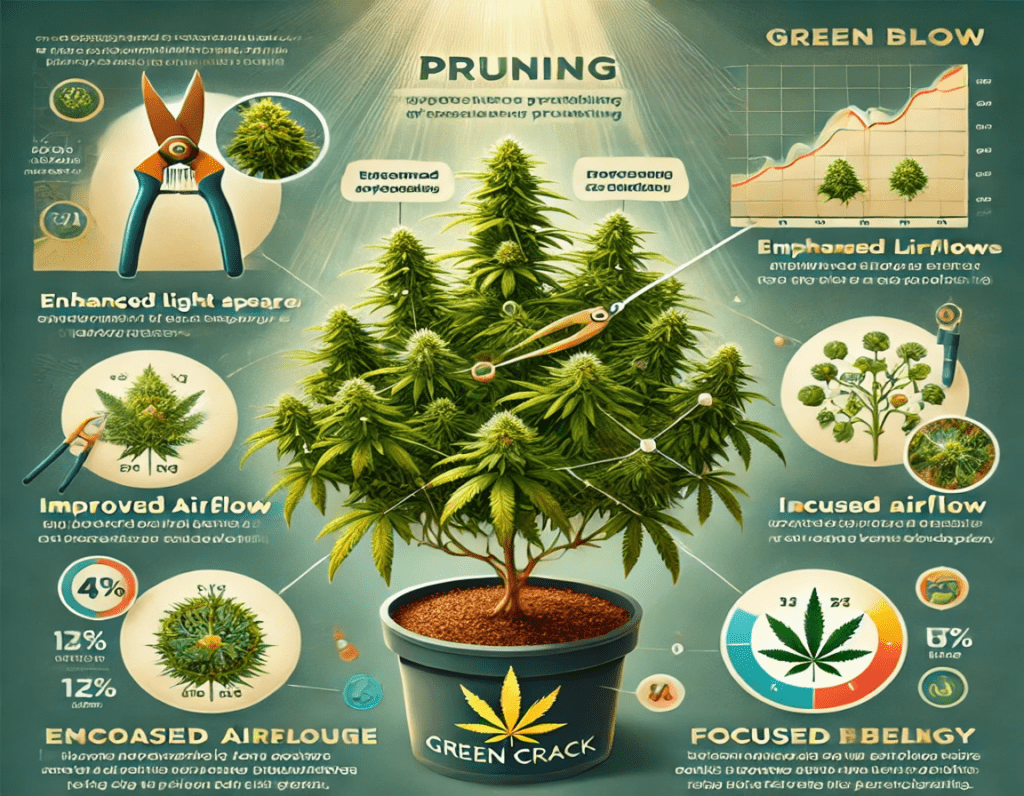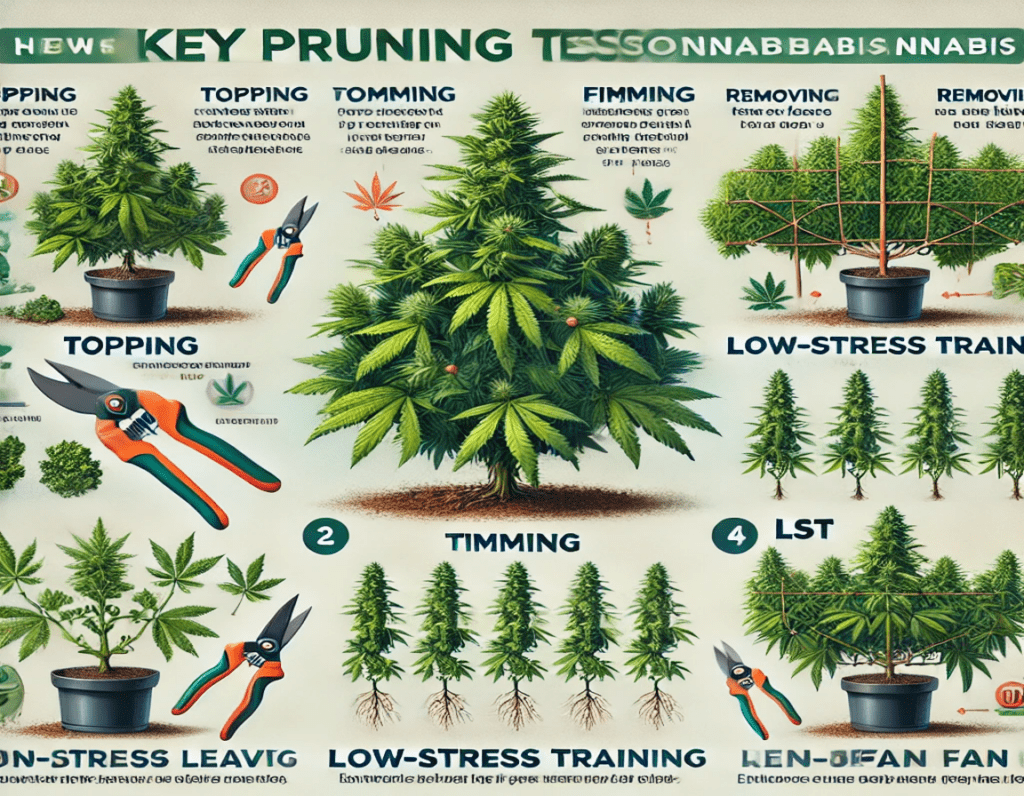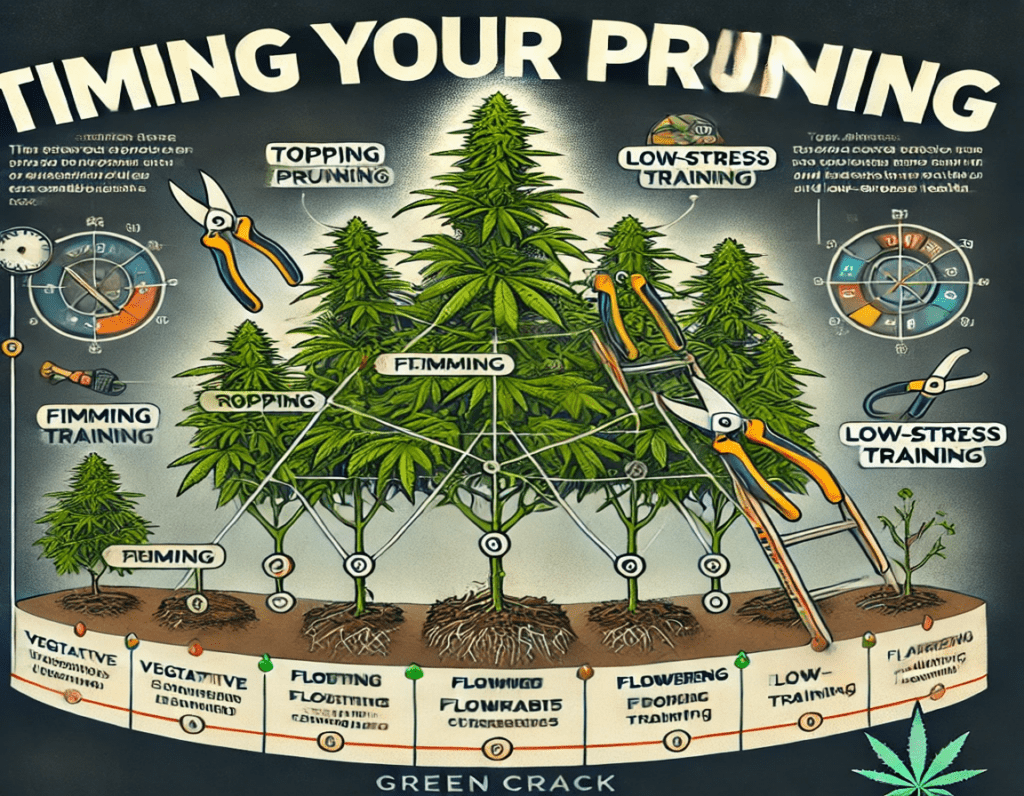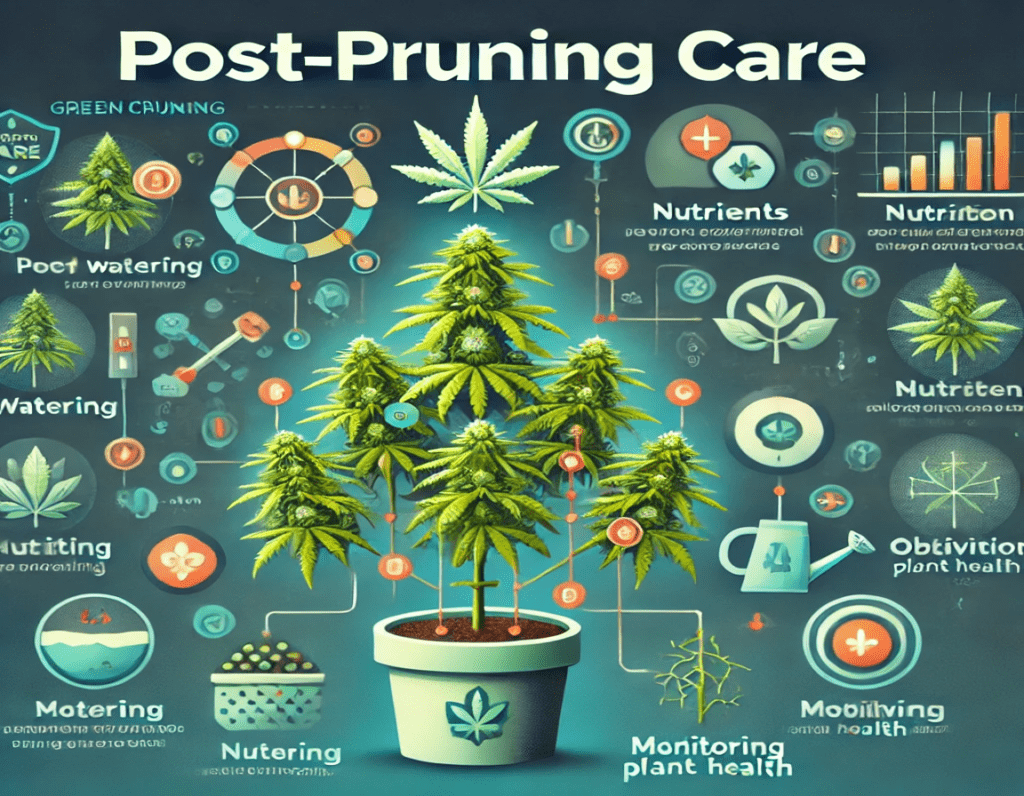
Pruning is a vital horticultural practice that can significantly enhance the yield and quality of your Green Crack cannabis plants. It involves selectively removing certain parts of the plant, such as leaves and branches, to improve air circulation, light penetration, and overall plant health. Understanding the benefits of pruning is essential for any grower aiming to maximize their crop’s potential.
By removing excess foliage, you allow more light to reach the lower parts of the plant. This increased light exposure encourages even growth and helps develop larger, more productive buds. Green Crack, known for its high yields, benefits immensely from well-executed pruning techniques. When light can penetrate deeper into the plant, it stimulates growth in previously shaded areas, resulting in a more robust overall structure. This is especially important in indoor setups, where artificial light may not be distributed evenly across the canopy.
Good airflow around your plants reduces the risk of mold and mildew, especially in humid environments. Pruning helps prevent overcrowding, ensuring that air can circulate freely around the foliage. This is crucial for maintaining plant health and maximizing yield. Proper airflow also helps regulate humidity levels, reducing the likelihood of disease and promoting a healthier growing environment. By minimizing stagnant air pockets, you create a less hospitable environment for pests and pathogens.
Pruning redirects the plant’s energy from unnecessary growth to bud development. When you remove lower growth and small buds, the plant can concentrate its resources on producing larger, denser buds higher up, ultimately increasing your yield. By focusing on fewer but more productive sites, you ensure that your plants use their energy efficiently, leading to a better harvest. This strategy not only enhances the overall quality of the buds but also improves the efficiency of nutrient uptake.

Several pruning techniques can be employed to enhance the growth and yield of your Green Crack cannabis plants. Understanding when and how to apply these techniques is crucial for success.
Topping involves cutting off the top of the main stem, which encourages the plant to grow two new colas instead of one. This technique increases the number of flowering sites, leading to a bushier plant and potentially higher yields. For Green Crack, topping should be done during the vegetative stage when the plant has developed a few sets of leaves. Topping is particularly effective in promoting lateral growth, allowing for a more even canopy.
How to Top:
Use clean, sharp scissors or pruning shears.
Identify the top node of the plant and cut just above it, ensuring that you leave a few healthy leaves below the cut.
Monitor the plant’s response in the following days as new growth begins to develop.
Fimming is similar to topping but involves cutting the main stem slightly above the node, leaving some leaf material intact. This method results in multiple new growth shoots, promoting bushier growth. Fimming can be a great option for those looking to increase their plant’s canopy size without significantly delaying growth. This technique allows you to maximize the number of main colas, enhancing your overall yield.
How to Fim:
Use sterilized scissors to ensure cleanliness.
Make a cut about 75% through the main stem, just above the node.
Observe as new shoots begin to sprout from the cut area, leading to a more bushy structure.
Low-Stress Training (LST) is a technique that involves gently bending and tying down branches to encourage lateral growth. By keeping the plant’s height manageable and increasing light exposure to lower branches, you can promote even bud development across the plant. LST can be started early in the vegetative stage and can be continued throughout the growth cycle. This method allows you to manipulate the plant’s shape and maximize the use of available light.
How to Perform LST:
Start with a young, flexible plant.
Gently bend the main stem to one side and secure it with soft ties or plant ties to avoid damaging the plant.
Continue to adjust the ties as the plant grows, maintaining an even canopy.
Strategically removing larger fan leaves that block light from lower branches can improve light penetration and air circulation. While it’s essential to retain enough foliage for photosynthesis, selectively removing leaves can help promote healthier growth in shaded areas. Focus on leaves that are yellowing or damaged, as they may not contribute positively to the plant’s health.
Tips for Leaf Removal:
Regularly assess your plants for leaves that are blocking light or showing signs of disease.
Remove leaves cleanly with scissors, taking care not to damage nearby buds or stems.
Avoid removing more than 20-30% of foliage at one time to minimize stress.

Knowing when to prune your Green Crack plants is as important as knowing how. The timing of pruning can significantly affect your plant’s recovery and yield.
The best time to perform major pruning techniques like topping and fimming is during the vegetative stage. This is when the plant is actively growing and can quickly recover from stress. Prune your plants when they have developed at least 4-6 nodes for the best results. Timing your pruning properly can lead to optimal growth and yield.
Optimal Conditions:
Ensure your plants are healthy and well-watered before pruning.
Aim to prune during the morning when plants are most turgid, which helps minimize stress.
While it’s generally advisable to limit major pruning during the flowering stage, minor pruning can still be beneficial. Removing excess foliage to improve airflow and light penetration can enhance bud development. However, avoid any heavy pruning during this phase to prevent unnecessary stress. If you notice that some leaves are blocking light from the buds, consider removing only those leaves.
Best Practices for Flowering Stage:
Monitor your plants closely for any signs of overcrowding or shading.
Remove only the leaves that are significantly blocking light from reaching the buds.
Ensure that the plant is still receiving adequate nutrition and water after minor adjustments.

After pruning your Green Crack plants, it’s essential to provide proper care to ensure they recover quickly and continue to thrive.
Ensure your plants are adequately watered after pruning. This helps them recover from the stress of cutting and supports continued growth. Avoid overwatering, as this can lead to root rot. It’s best to check the moisture level of the soil before watering and to allow the top inch to dry out slightly between waterings.
Water thoroughly until you see excess drainage from the bottom of the pot.
Use a moisture meter to help gauge when to water next.
Avoid watering again until the top layer of soil is dry to prevent over-saturation.
Consider slightly adjusting your nutrient regimen post-pruning. Providing a balanced nutrient mix can support recovery and promote healthy new growth. Focus on nitrogen during the vegetative stage to encourage foliage growth and potassium and phosphorus during flowering to support bud development. Monitoring your plants’ response to nutrients is key, especially after a pruning session.
Nutrient Tips:
If your plants show signs of stress after pruning, consider using a diluted nutrient solution to aid recovery.
Adjust nutrient ratios based on the growth stage—higher nitrogen during vegetative growth and increased phosphorus and potassium during flowering.
Keep a close eye on your plants after pruning. Monitor for any signs of stress, such as wilting or yellowing leaves. Adjust your care routine as needed to address any issues that arise. It’s essential to respond quickly to any signs of distress to ensure your plants remain healthy.
Observation Strategies:
Conduct daily checks for any changes in leaf color or growth patterns.
Take notes on plant responses to pruning and care adjustments to refine your techniques in future cycles.

Pruning is not just a maintenance task; it plays a crucial role in the overall success of your Green Crack Seeds cultivation.
When done correctly, pruning can lead to higher yields. By optimizing light exposure and focusing the plant’s energy on fewer, more productive buds, you can significantly increase the quantity and quality of your harvest. Growers often report seeing larger, denser buds as a result of effective pruning techniques. This can ultimately lead to a more profitable crop.
Yield Optimization Strategies:
Combine pruning with other cultivation techniques like topping and LST for maximum impact.
Track yield results across different pruning techniques to identify what works best for your specific growing conditions.
Healthy plants are more resilient to pests and diseases. Pruning helps maintain good airflow and light penetration, reducing the risk of mold and mildew. By keeping your plants healthy, you can ensure they are better equipped to handle environmental stressors and potential infestations.
Plant Health Monitoring:
Use plant health indicators such as leaf color, growth rate, and pest resistance to evaluate the success of your pruning practices.
Regularly assess environmental factors like humidity and temperature to complement your pruning efforts.
For growers with limited space, pruning techniques like topping and LST can maximize the available growing area. A well-pruned plant can fit more efficiently into a growing space, making the best use of both vertical and horizontal dimensions. This is particularly important in indoor grow operations where space is often at a premium.
Space Management Techniques:
Utilize vertical growing systems to take advantage of height, especially with trained plants.
Consider staggered planting to maximize your grow area while maintaining good light and airflow.
The best time to prune is during the vegetative stage when the plants have developed several nodes.
While major pruning should be avoided during flowering, minor pruning to improve airflow and light penetration can be beneficial.
Topping encourages bushier growth and increases the number of flowering sites, potentially leading to higher yields.
Pruning frequency will depend on the growth rate and size of your plants. Regular monitoring will help you determine the best times to prune.
Yes, it can be beneficial to adjust your nutrient regimen post-pruning to support recovery and promote healthy growth
We ship and deliver world wide via USPS and various couriers.
We offer a wide range of secure and anonymous online payment options.
We care about you, our customer. Please contact us with any questions or concerns.
Find out more about the benefits of being a loyal and regular customer.
WE ARE EVERY GROWERS ONE STOP SHOP TO ACQUIRE PREMIUM CANNABIS SEEDS FOR SALE IN THE USA, CANADA AND AUSTRALIA

Farmers Lab Seeds 2024, | All Right Reserved
Seeds are sold as novelty items, souvenirs, and collectibles. They contain 0% THC. We encourage our customers to check the legislation in their Country, State, Province, and Municipality prior to purchasing items from our store. We do not provide growing information.
All seeds are sold as hemp, and lab tested under 0.3% THC. This product is not for use by or sale to persons under the age of 21. This product should be used only as directed on the label. It should not be used if you are pregnant or nursing. Consult with a physician before use if you have a serious medical condition or use prescription medications. A Doctor’s advice should be sought before using this and any supplemental dietary product. All trademarks and copyrights are property of their respective owners and are not affiliated with nor do they endorse this product.
These statements have not been evaluated by the FDA. This product is not intended to diagnose, treat, cure or prevent any disease. Individual weight loss results will vary. By using this site, you agree to follow the Privacy Policy and all Terms & Conditions printed on this site. Void Where Prohibited by Law.